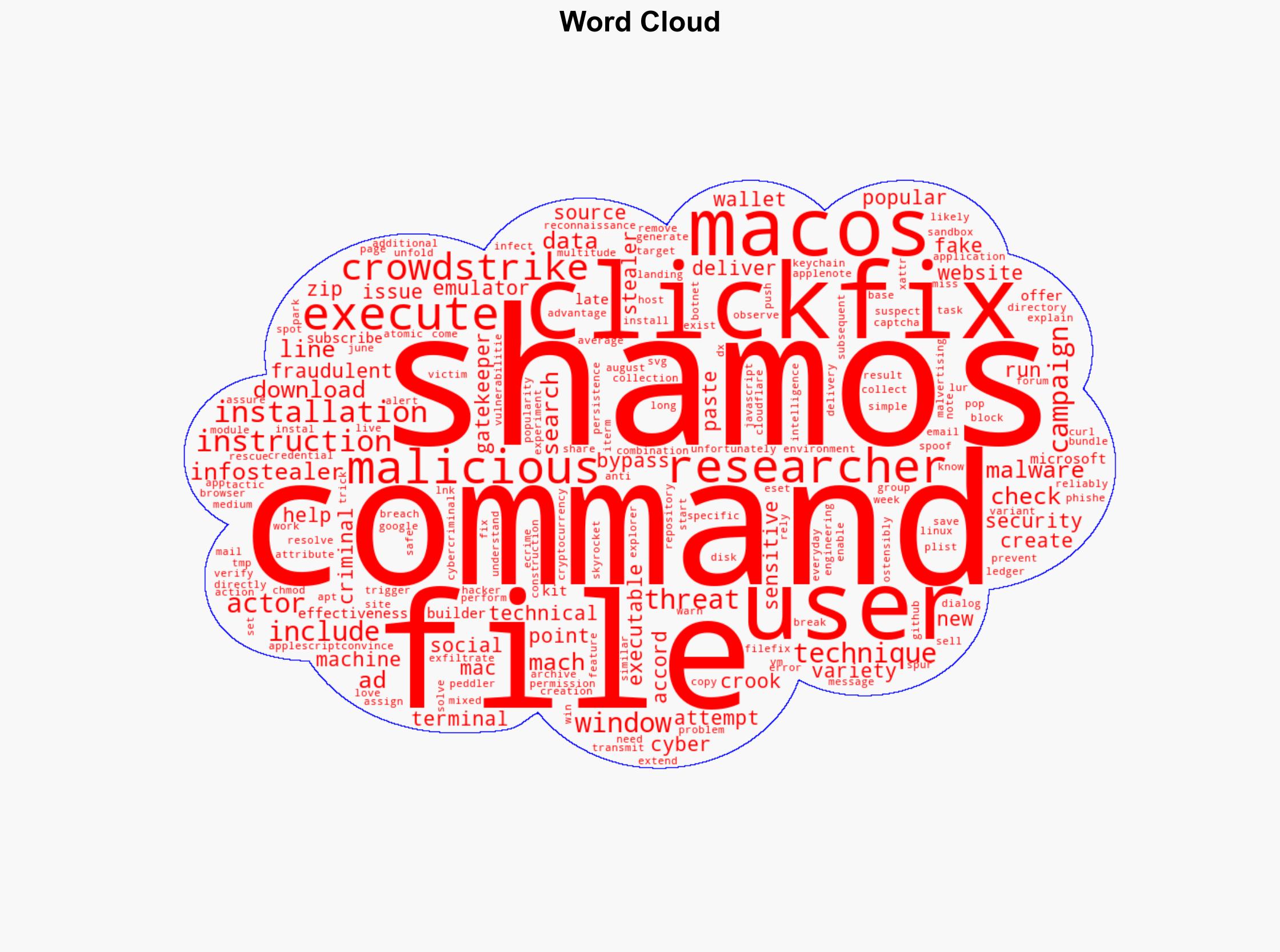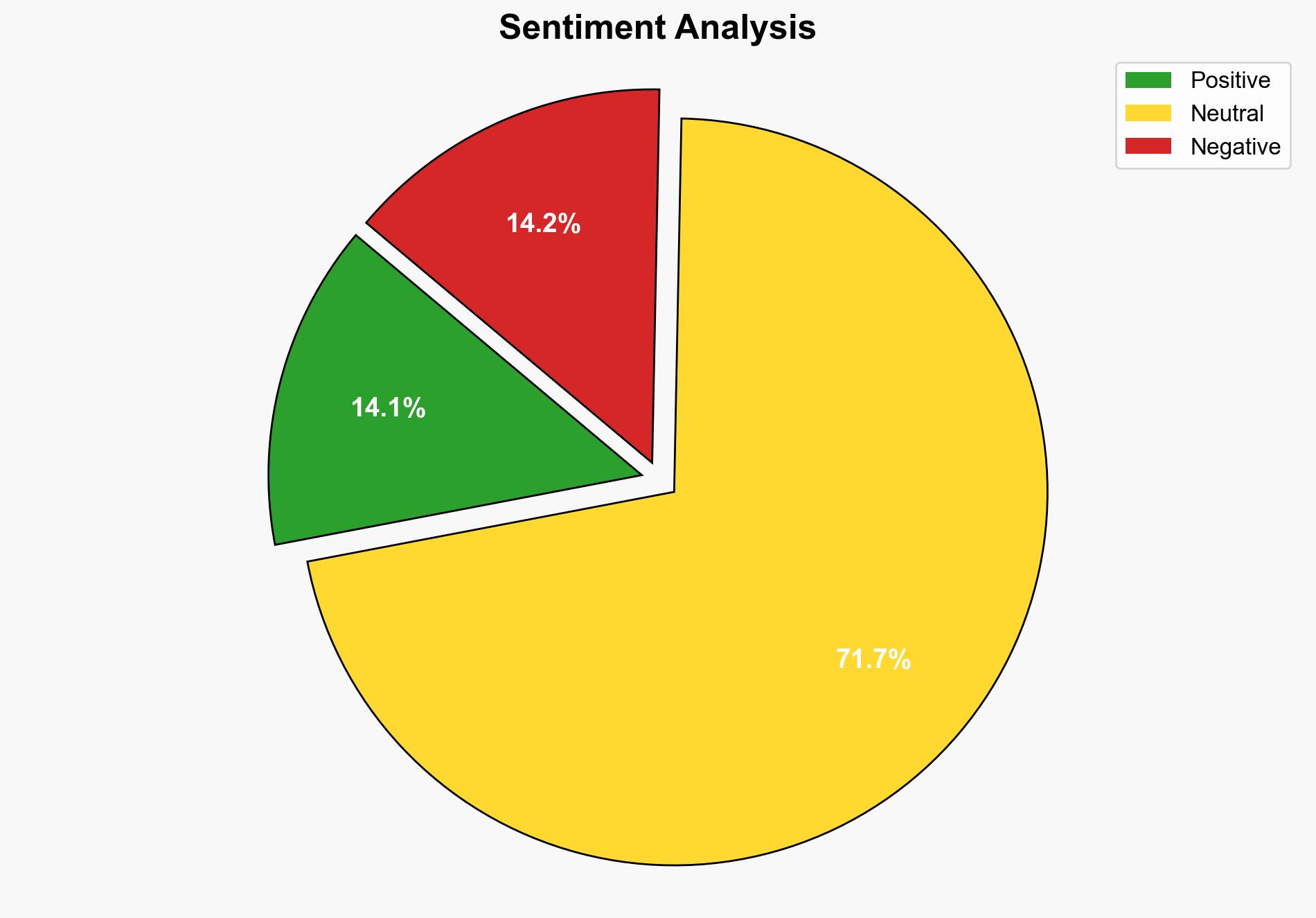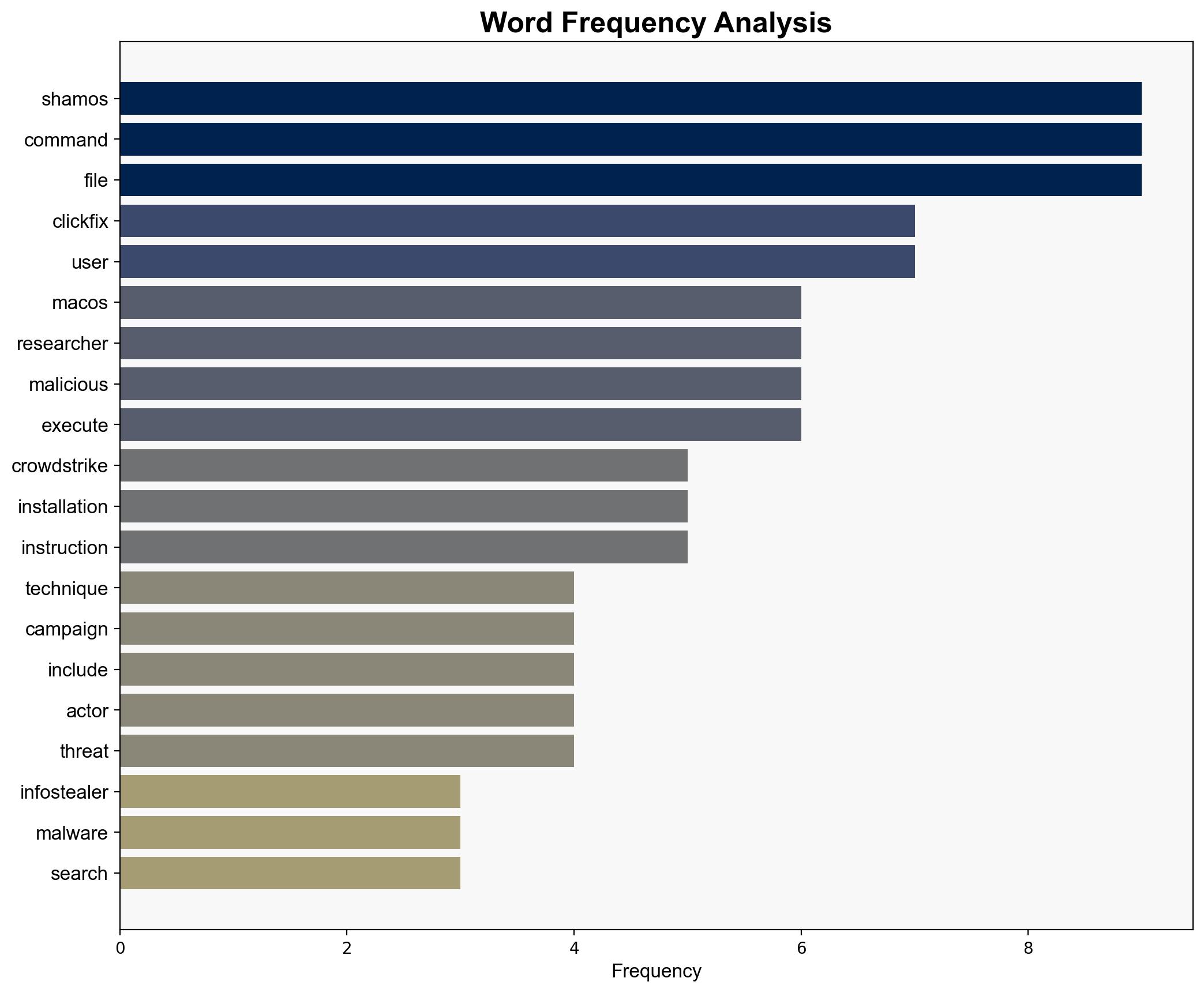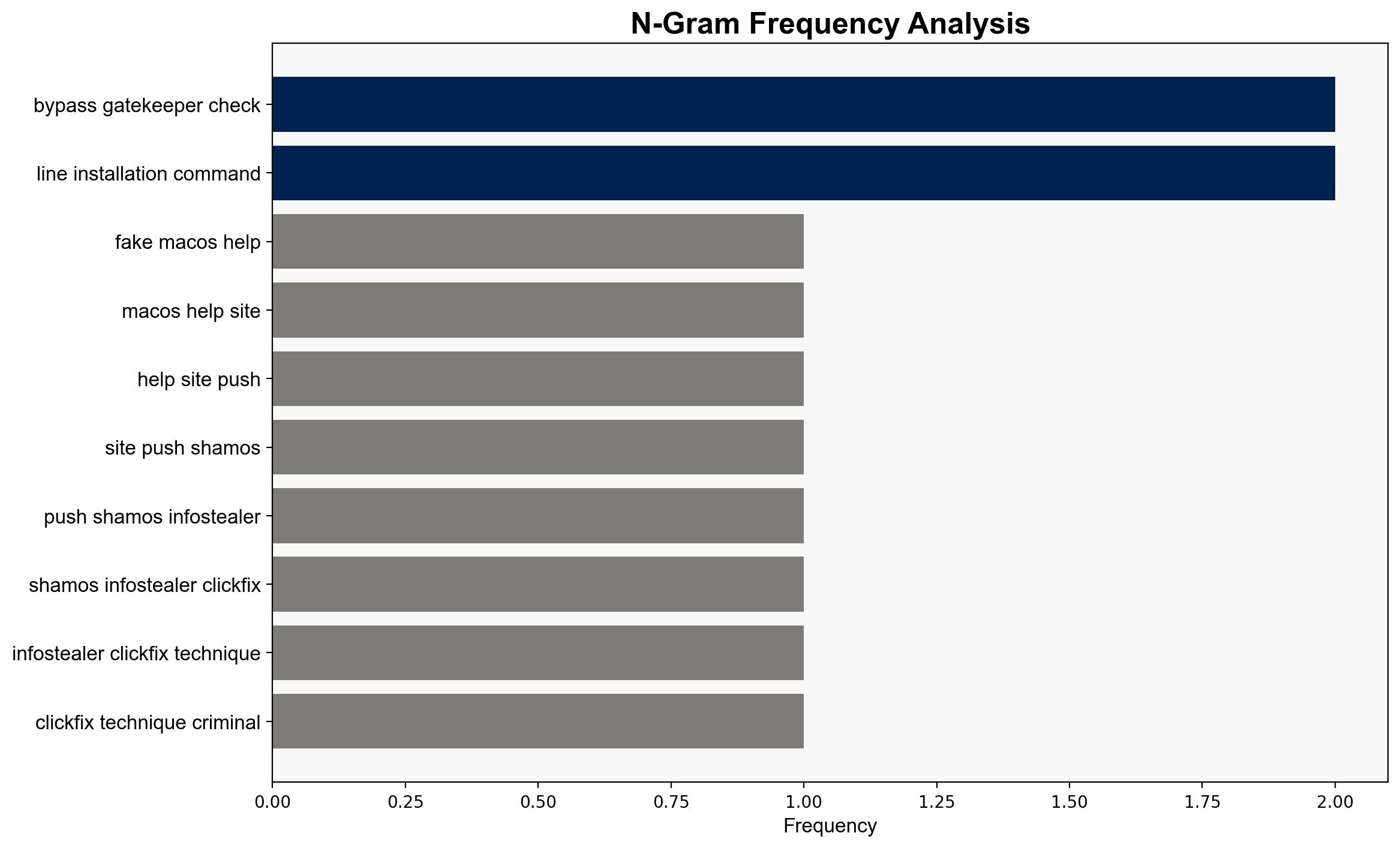Fake macOS help sites push Shamos infostealer via ClickFix technique – Help Net Security
Published on: 2025-08-25
Intelligence Report: Fake macOS help sites push Shamos infostealer via ClickFix technique – Help Net Security
1. BLUF (Bottom Line Up Front)
The Shamos infostealer campaign, leveraging fake macOS help sites and the ClickFix technique, poses a significant cybersecurity threat by exploiting user trust and bypassing macOS security features. The most supported hypothesis is that cybercriminals are increasingly using sophisticated social engineering tactics to target macOS users. Confidence level: High. Recommended action: Enhance user awareness and strengthen macOS security protocols to detect and mitigate such threats.
2. Competing Hypotheses
Hypothesis 1: Cybercriminals are primarily targeting macOS users due to perceived vulnerabilities in user awareness and security protocols, using the ClickFix technique to bypass existing defenses.
Hypothesis 2: The campaign is part of a broader strategy targeting multiple operating systems, with macOS being one of several platforms exploited due to its growing user base and perceived security weaknesses.
Using Analysis of Competing Hypotheses (ACH), Hypothesis 1 is better supported by the evidence. The campaign specifically exploits macOS security features and user behavior, as indicated by the detailed steps to bypass Gatekeeper and the focus on macOS-specific malware.
3. Key Assumptions and Red Flags
Assumptions include the belief that macOS users are less vigilant against cyber threats and that existing security measures can be circumvented. A red flag is the lack of detailed information on the geographic distribution of the attacks, which could indicate a broader or more targeted campaign than currently understood. Potential cognitive biases include overestimating the security of macOS systems compared to other platforms.
4. Implications and Strategic Risks
The campaign highlights a growing trend of sophisticated social engineering attacks targeting less technical users. This could lead to increased financial losses and data breaches if not addressed. The use of malvertising and fake help sites could escalate, affecting trust in online resources. Economically, this could impact companies reliant on macOS systems. Psychologically, it may increase user anxiety and reduce trust in digital platforms.
5. Recommendations and Outlook
- Enhance public awareness campaigns focusing on recognizing and avoiding social engineering tactics.
- Strengthen macOS security features to detect and block unauthorized command execution.
- Monitor and report on the evolution of the ClickFix technique across platforms.
- Best-case scenario: Increased awareness and improved security measures reduce the effectiveness of such campaigns.
- Worst-case scenario: The technique evolves, targeting a wider range of users and systems, leading to significant data breaches.
- Most likely scenario: Continued targeting of macOS users with gradual adaptation of security measures.
6. Key Individuals and Entities
CrowdStrike researchers, ESET, Microsoft Threat Intelligence, Check Point researchers.
7. Thematic Tags
national security threats, cybersecurity, social engineering, macOS security, malware campaigns





